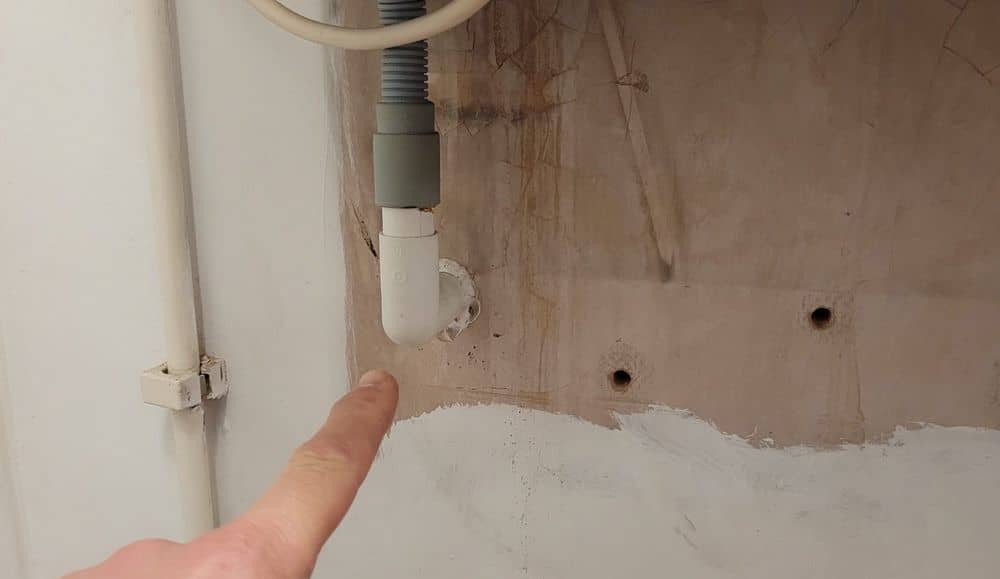During the peak winter months, the Maintracts team will typically receive at least fifty calls a day relating to broken down boilers, the majority of which we can resolve over the phone because they relate to frozen condensate pipes. If you are having problems with your boiler not coming on, check your condensate pipe before you do anything else, it can save you a lot of time and you may not even need to call out a heating engineer at all. In this article, we explain how you can safely thaw out a frozen condensate pipe and how you can help prevent this issue from happening again.
Condensing boilers require an additional pipe to carry away wastewater that forms during the normal condensing process. This is called the condensate pipe. It is normally plastic and white and runs from the boiler to an outside drainage pipe. If your condensate pipe runs externally, it will be exposed during the winter months and in extreme temperatures the condensate pipe can become frozen.
How will I know if my condensate pipe is frozen, we hear you ask?
If the condensate pipe on your boiler freezes, it can prevent the boiler from functioning. Depending on the brand of boiler you have, you will see an error code flash up to indicate that the boiler condensate pipe is frozen:
- On Worcester Bosch boilers, an EA 229 code or a D5 error code will present itself.
- A Vaillant boiler will show either error code F28 or F29 to indicate a frozen condensate pipe.
For other boiler brands, check your boiler manual to see which code indicates a frozen condensate pipe.
If you see a code that indicates a frozen condensate pipe flash on your boiler, we recommend following these steps to safely unfreeze the condensate pipe:
- We always recommend calling a Gas Safe engineer first to check you have diagnosed the correct problem and that it is safe to proceed. They will also help you locate the condensate pipe, which is typically a white or grey plastic pipe, connected to the bottom of your boiler. It runs through the wall to the outside of your property.
- The pipe will have a build-up of water inside which will need to defrost before it will work again. If you feel confident and safe enough, try to thaw your pipe by pouring some warm water over the pipe (NOT hot or boiling water as that will cause the pipe to crack) or warm the pipe using a hot water bottle.
- Once the frozen water has thawed, you will hopefully then be able to restart your boiler.

How to prevent a frozen condensate pipe
The most energy efficient way to prevent condensate pipes from freezing up is to arrange for your installer to insulate your pipe properly by covering the external condensate pipe with foam pipe insulation. In some cases, your installer may recommend replacing the pipe with a larger diameter pipe which is less likely to freeze up completely. They might also reroute the pipe inside the house or to a more sheltered position, before insulating it. Leaving your heating on overnight at a lower temperature to keep the condensate warm is another option and, while it does use energy, your boiler will take less time to heat up your home in the morning. Likewise, setting your boiler thermostat to a higher temperature will use more energy and therefore, reduce the amount of condensate. However, for the energy conscious among us, insulating the pipe will be the best solution.
Tips to prevent common freezing weather plumbing problems
- A drop in water pressure or restricted water flow are tell-tale signs that a pipe is starting to freeze up. Make sure you keep an eye out for these two signs so you can act quickly to prevent the problem escalating.
- Disconnect garden hoses and disconnect and drain outdoor water taps/pipes. If they remain connected and freeze, it can cause the pipe to burst.
- Insulate outside water pipes.
- Get your boiler serviced by Gas Safe heating engineer to ensure there are no leaks and drips which may freeze when the temperature plummets. It will also provide peace of mind that your boiler is working correctly and efficiently over the winter months.
- Open the doors of your kitchen and any cabinet doors, particularly at night, to allow warmer air to circulate around the plumbing.
Top tip for an energy efficient winter
Reduce your boiler flow temperature
If rising energy bills are giving you sleepless nights, there is one simple tweak you can make to save some serious cash. If you have a combi boiler (as most homes do), turning down the heating flow temperature on your boiler, could save you around 9% on your gas bill. Turning down your flow temperature is different from turning down your thermostat. A combi boiler flow temperature works most efficiently when it is set at 60°C or below. 60°C is when a combi operates in 'condensing mode' (recovering heat that would otherwise be lost) and, therefore, runs more efficiently. For full details, explanations, and a step-by-step guide on how to turn the boiler flow temperature down on your boiler, check out our boiler flow temperature blog.
If you are not confident in having a go at thawing out a frozen condensate pipe, or you have already tried but had no success in getting your boiler to restart, the team at Maintracts would be happy to oblige.

